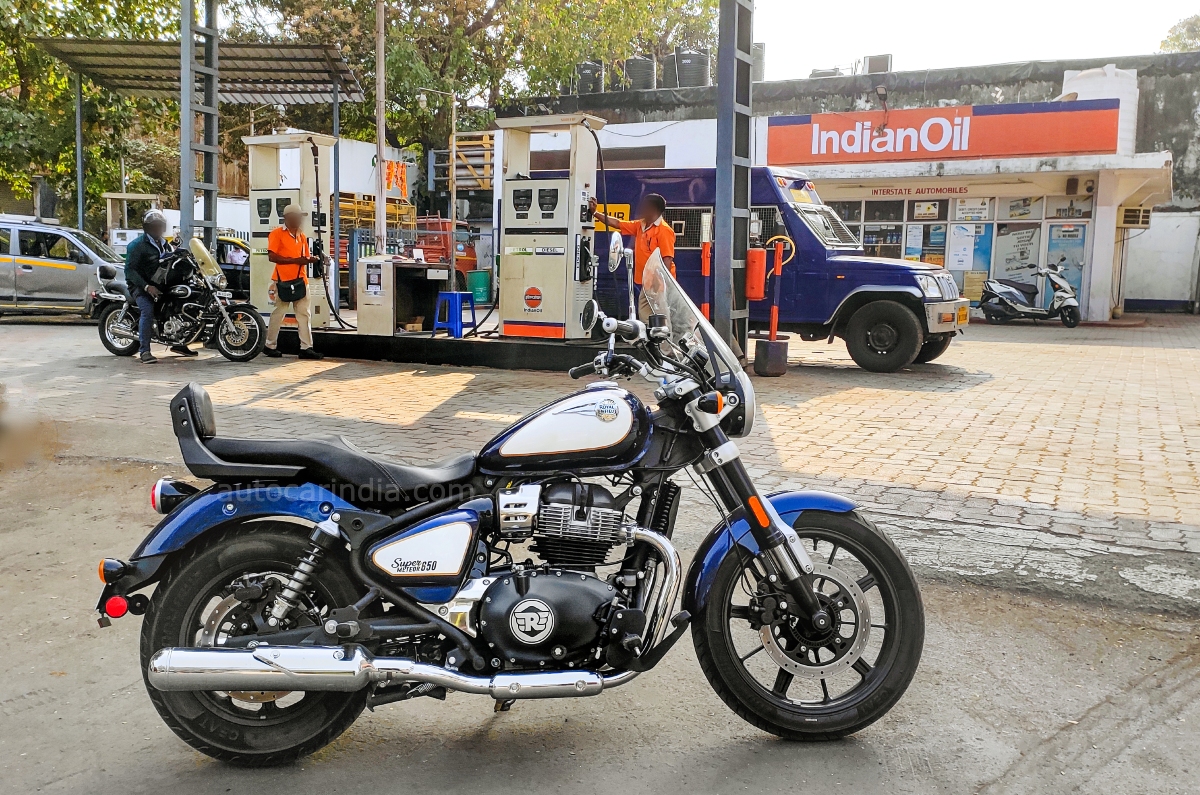
Royal Enfield Super Meteor 650 real world fuel economy tested, explained
February 7, 2023

Our first taste of the new Royal Enfield Super Meteor 650 came at a first ride in Rajasthan, where the motorcycle made an excellent first impression, with its cruiser qualities shining through. Now, we’ve been able to trial RE’s latest in our home city of Mumbai, giving us a better real world analysis of the motorcycle.
As part of our testing cycle, we’ve put it through our traditional fuel efficiency tests, both in the city and out on the highway. And here’s how it performed.
What is the real world efficiency of the Super Meteor 650?
After having covered a shade under 70km on the highway, the Super Meteor’s 15.7-litre fuel tank needed a top-up of 2.30 litres, giving it a highway efficiency of 30.17kpl. Back in the city, we brimmed the tank once again and ran the bike in moderate traffic for close to 44km, after which it needed just under 2 litres to get back to full. This gave us an efficiency of 22.41kpl in the city.
Royal Enfield Super Meteor 650 real world fuel efficiency: analysis
Though the Super Meteor does share its 648cc parallel-twin engine with the Interceptor and Continental GT 650, there are a couple of key differences here. For one, this is a significantly heavier motorcycle, tipping the scales at 241kg compared to the Interceptor’s 212kg (approx). And to help offset this extra mass, RE has also shortened the overall gearing on the Super Meteor.
Both these factors contribute to make the cruiser noticeably less efficient than RE’s existing 650cc models. When we tested the Interceptor for fuel efficiency, we got slightly higher figures of 24.80kpl and 34.66kpl in the city and on the highway, respectively.
In isolation, the Super Meteor’s fuel efficiency figures, combined with its decent tank size, should still allow you to squeeze a range of a little over 400km from a tankful, which is good enough for most riders in most parts of the country.
Autocar India’s fuel efficiency testing
Our fuel efficiency testing routine starts off by first brimming the tank and ensuring that the bike is running the manufacturer’s recommended tyre pressures. The bike is then ridden on fixed city and highway routes, where we maintain pre-decided average speeds that best mimic real-world scenarios. The payload on the bikes is kept constant by balancing rider weights and ballast, ensuring consistency across different vehicles and riders. At the end of the test cycle, the fuel tank is once again filled to the brim, giving us an accurate figure of how much fuel has been consumed.
Royal Enfield gears up for first EV launch in 2024
——————————————————————————————————————–
Bull-LEDs | Guaranteed Custom
Contact us – https://bull-leds.com
This is a autogenerated feed from https://www.autocarindia.com/advice/royal-enfield-super-meteor-650-real-world-fuel-economy-tested-explained-427222#utm_source=feed&utm_medium=rss&utm_campaign=Autocar+India+Advice+feed & Bull-LEDs do not have any ownership of the content.

